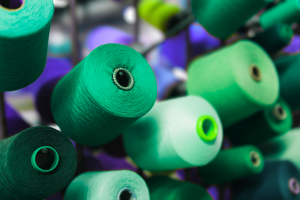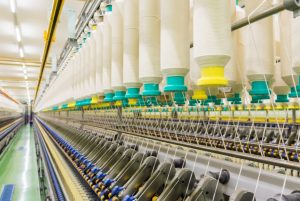Viscose rayon can be found in cotton-like and silk-like materials. Viscose rayon is the oldest commercial fiber which is artificially produced material. It is naturally regenerated with materials like wood pulp, cotton, and linens. The degree of polymerization is 400 to 700 and the chemical structure of viscose
resembles cotton to specific cellulose.
Steps of manufacturing viscose fiber
The manufacturing of viscose staple fiber involves the following steps. Let’s concisely discuss them:
- Steeping
- Shredding
- Ageing
- Xanthation
- Ripening
- Preparation of spinning solution
- Filtration
- Spinning
Steeping:
Steeping is the first step of manufacturing viscose staple fiber. In this particular process, the wood pulp is treated for mercerization in the presence of NaOH at the mercerizing strength. The pulp sheets are then steeped in 18% NaOH. A product, Alkali cellulose is generated during this reaction.
Shredding:
In this process, the Alkali sheets are converted into a light fluffy mass with the help of a machine that consists of a pair of revolving blades rotating at high speed in the opposite direction.
Ageing:
All the crumbs produced at the end of the shredding procedure are transferred to a steel container where they are stored under a specific temperature for 3 to 72 hours which may vary according to the chemical catalyst and alkali. As there is air in the alkali make it reduces the chain length which in turn decreases the viscosity as it is essential to prepare a spinning solution. As soon as the correct viscosity is obtained, these pieces are transferred into a drum, which is kept in an inert atmosphere and at a low temperature.
Xanthation:
In this process, the aged alkali cellulose crumbs are placed in vats. They are allowed to react with carbon disulfide under a controlled temperature of 20 degrees to 30 degrees Celsius, forming cellulose xanthate.
Ripening:
During this process, the viscose is allowed to turn for a stipulated period of time. During ripening, two major processes take place. Firstly, the xanthate groups are redistributed, and then lost the density of the solution first decreases and then rises to its original value.
Preparation of spinning solution:
The spinning solution contains the following:
● Water-69%
● Zinc sulphate-1%
● Sodium sulphate-18%
● Glucose-2%
● Sulphuric acid-10%
The sodium sulfate precipitates the dissolved sodium cellulose xanthate. The sulphuric acid converts xanthate into cellulose, carbon disulfide, and sodium sulfate. The glucose provides softness and pliability to the filaments whereas zinc sulfate helps add strength.
Filtration:
In this process, the viscose is filtered to remove undissolved materials that might disrupt the spinning process or cause defects in the rayon filament.
Wet Spinning:
During this process, the ripened viscose solution passes through a centrifugal pump due to pressure exerted on the solution by the compressed air. Then this solution is forced through a spinneret which has so many holes with diameters ranging from 0.05- 0.1mm, as soon as some filaments emerge from the
spinneret they are taken together to the surface of the spinning bath, and then it goes to the two rollers from where they are wound on to a spindle.
Conclusion:
So in this step-by-step process, you can produce the viscose staple fiber which is heavily used for clothing materials.



